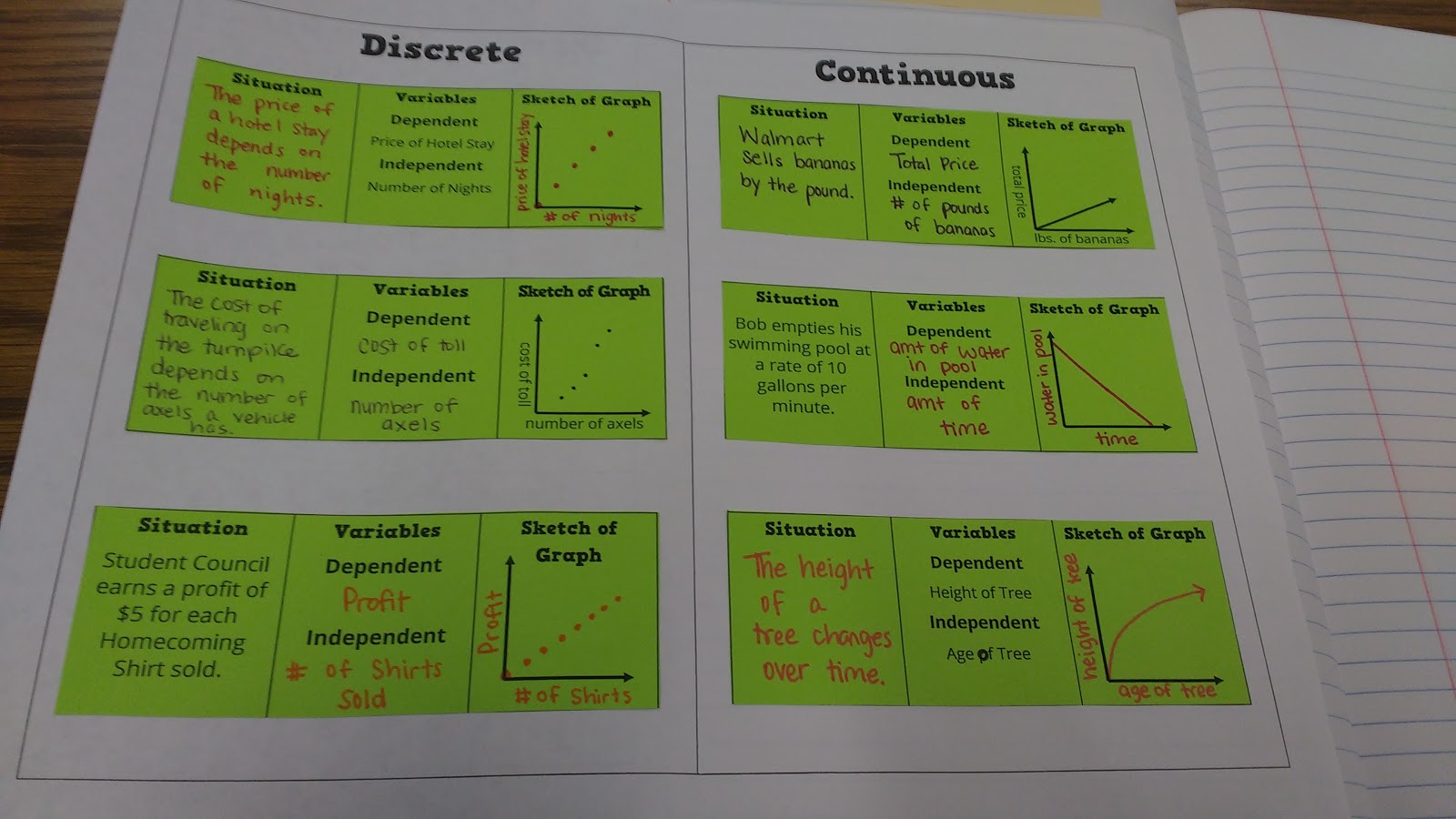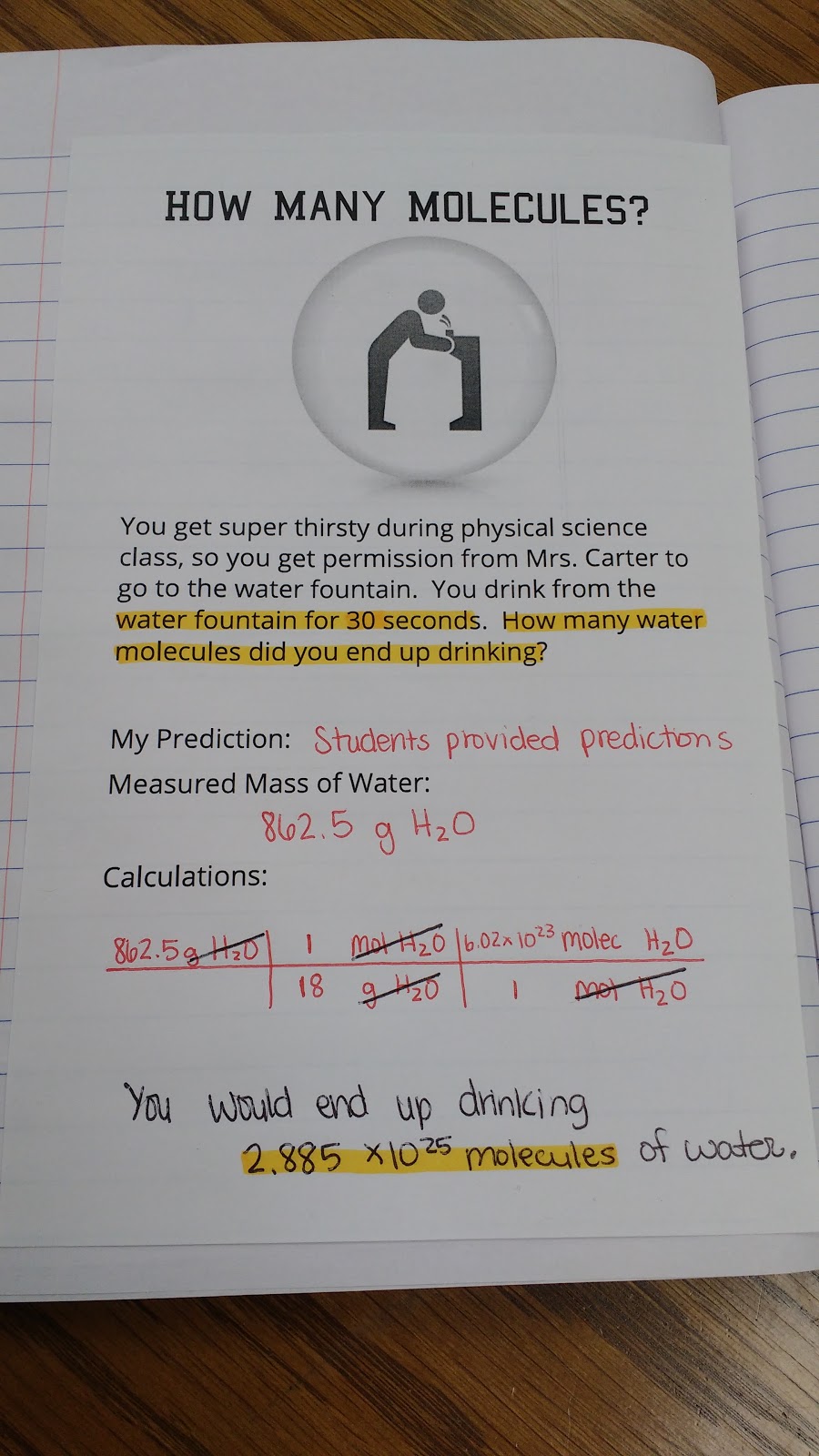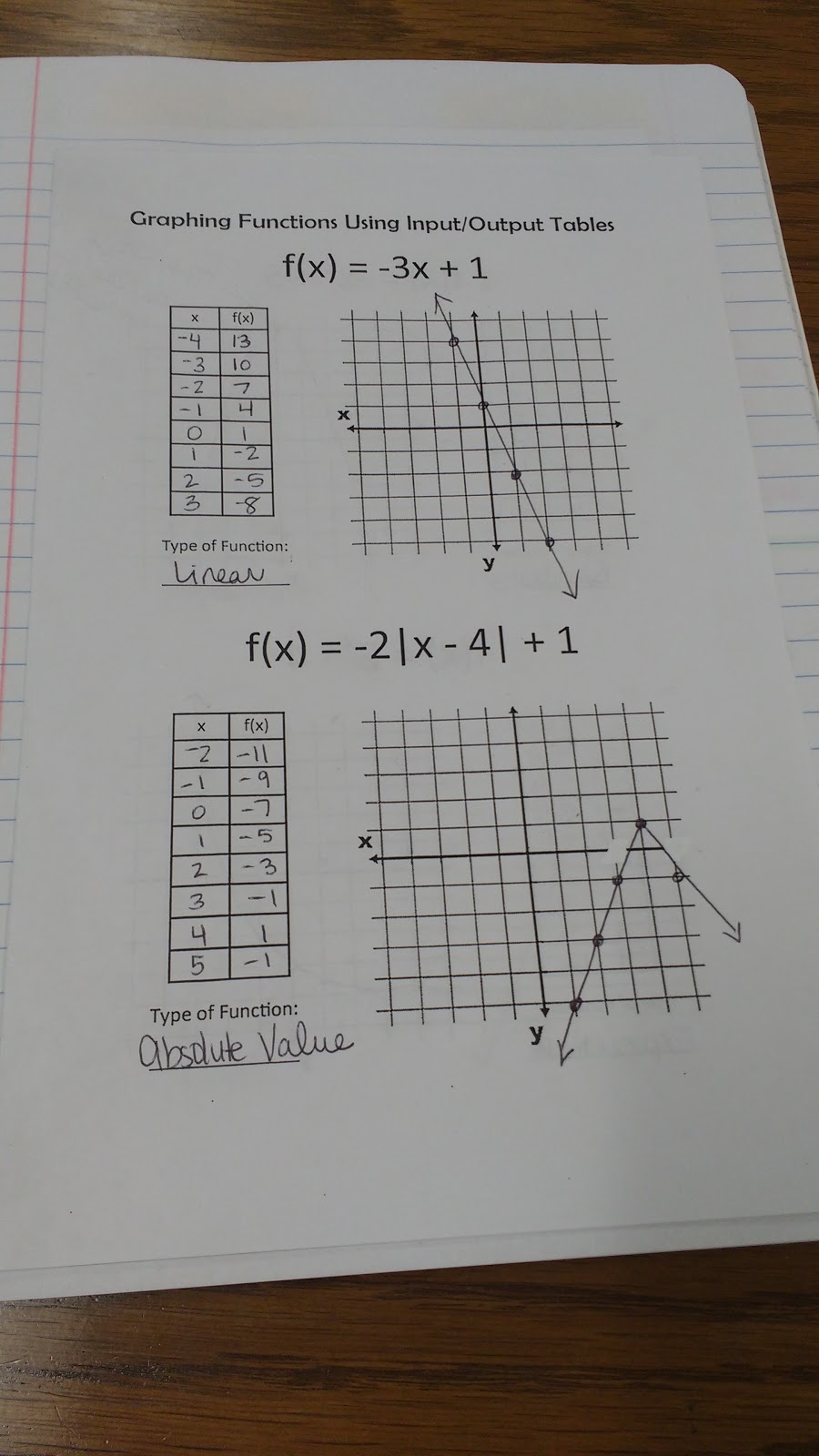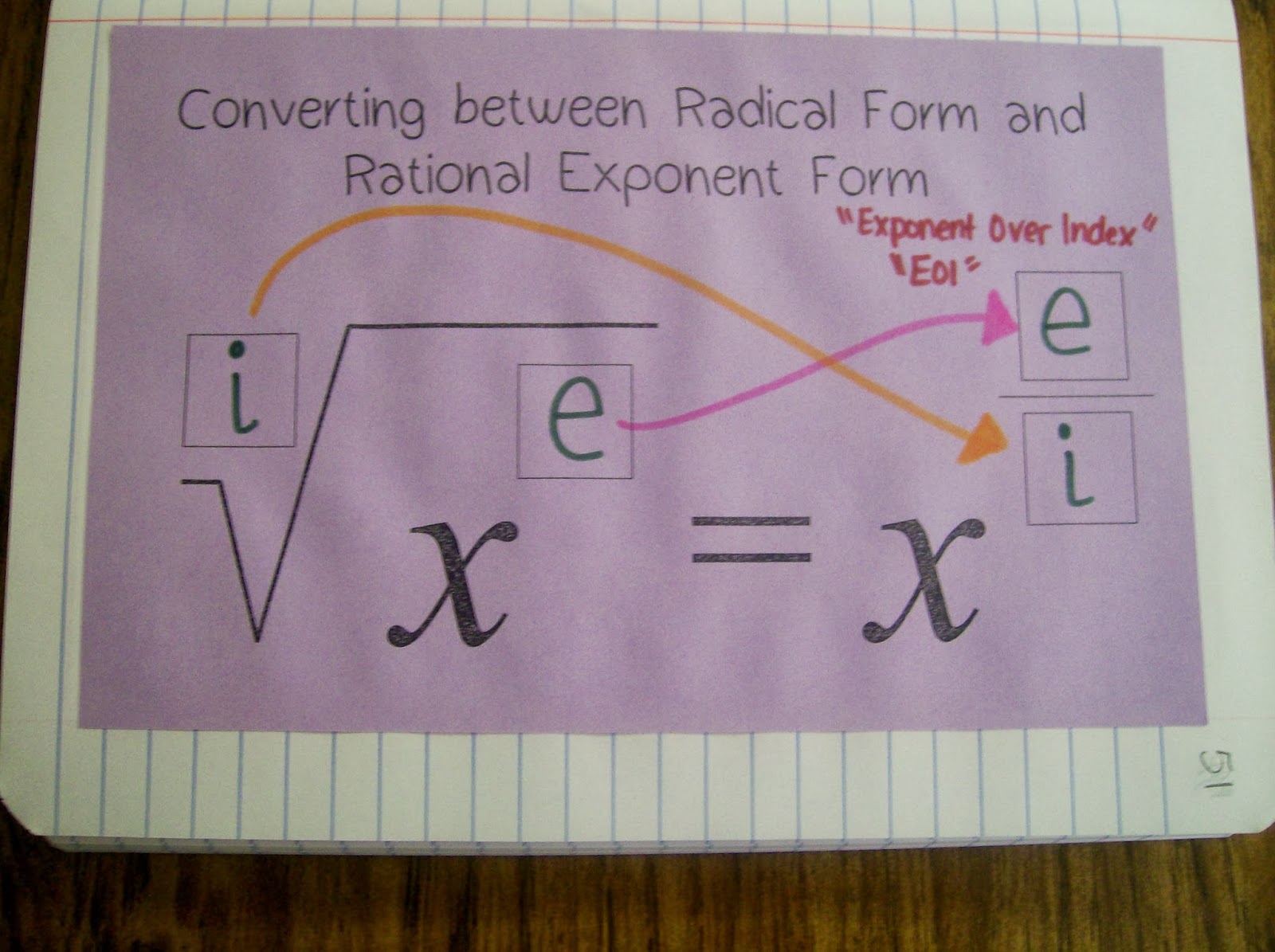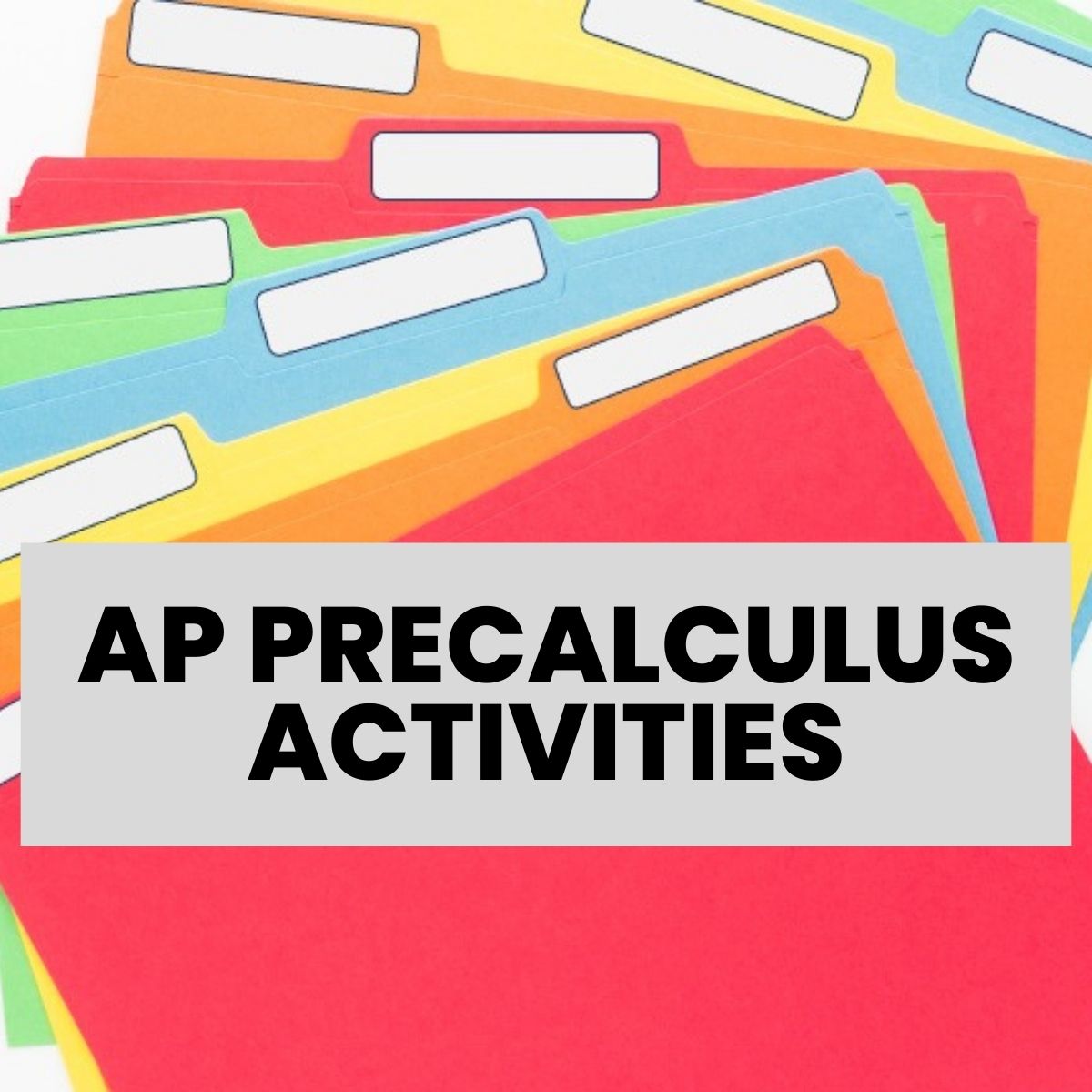What is a Radian? Hands-On Activity
This blog post contains Amazon affiliate links. As an Amazon Associate, I earn a small commission from qualifying purchases.
I created this hand-on exploration for my trigonometry students to explore the question “What is a Radian?”
I don’t ever remember really learning what a radian was when I took trig in high school. I’m sure my teacher told me, but I guess it didn’t really stick. We’re going to be dealing with radians a lot, and I decided I didn’t want my students to flip out every time radians were mentioned.
Naturally, I turned to google. Let’s just say I am a frequent google user. Some people in town refer to me as “Google Girl” because I use google so much. 🙂
SEARCH: “What is a radian?”
I quickly found a great discovery activity that involved circles and pipe cleaners and tracing and cutting and folding paper and basically everything I love and adore in life.
I would link you to the actual activity I used, but I actually ended up combining what I liked from five or six different resources.
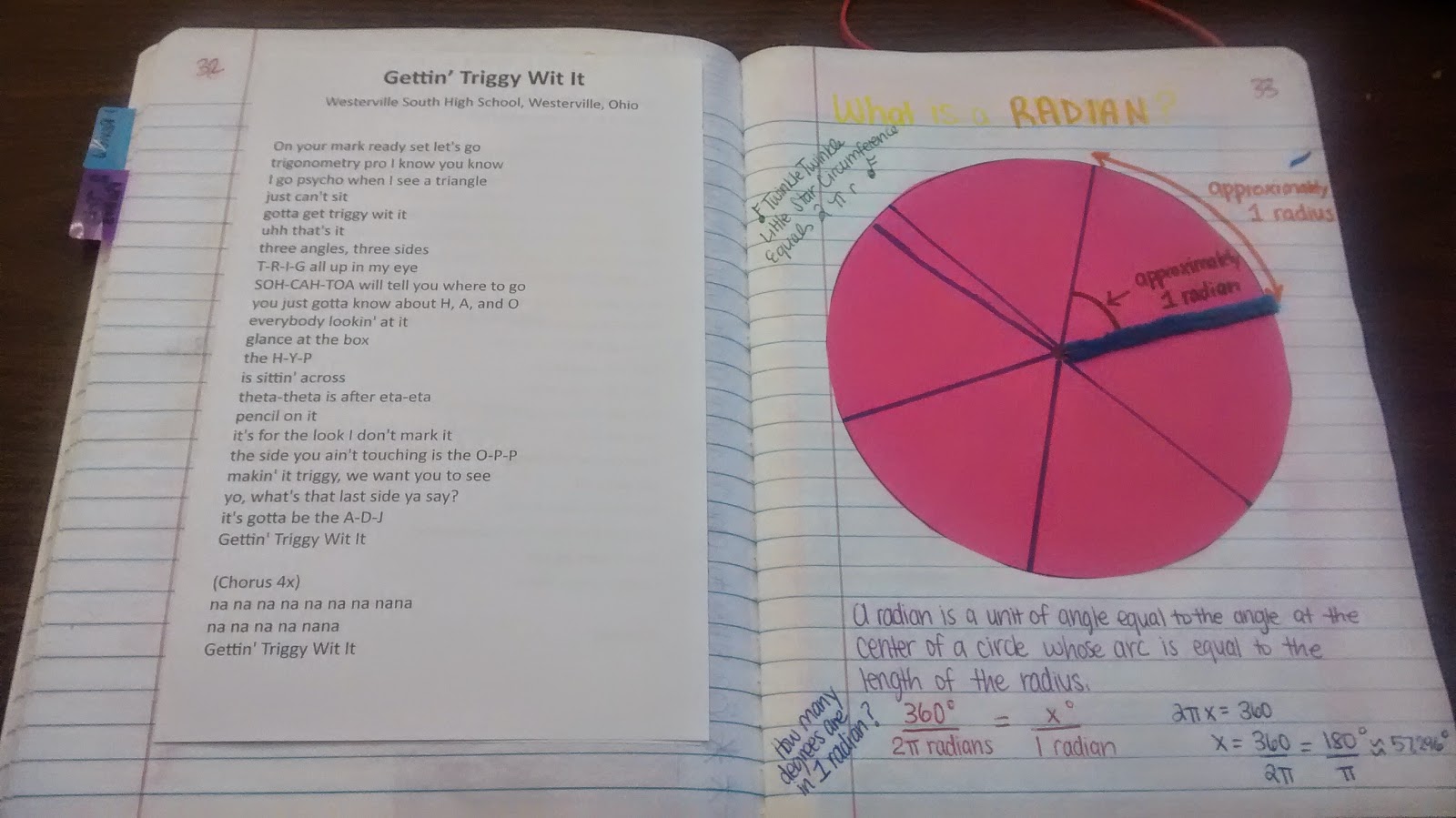
What is a Radian? Hands-On Activity
Step 1: Raid your kitchen cabinets for every circular lid you can find.

Step 2: Instruct each student to pick a lid when they enter the classroom.
Step 3: Trace your lid onto colored paper.
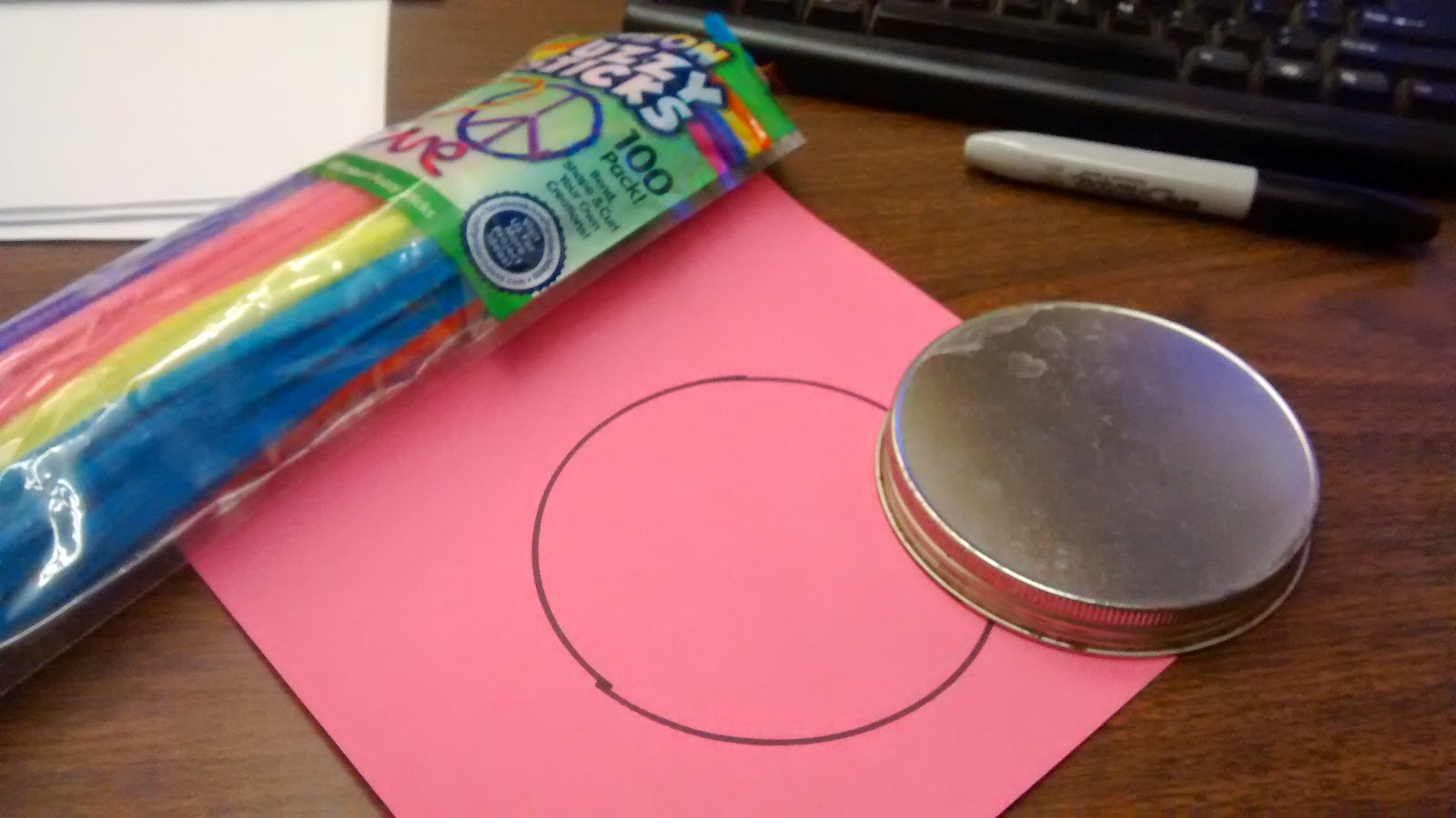
Step 4: Cut out the circle. Fold it in fourths to find the center.
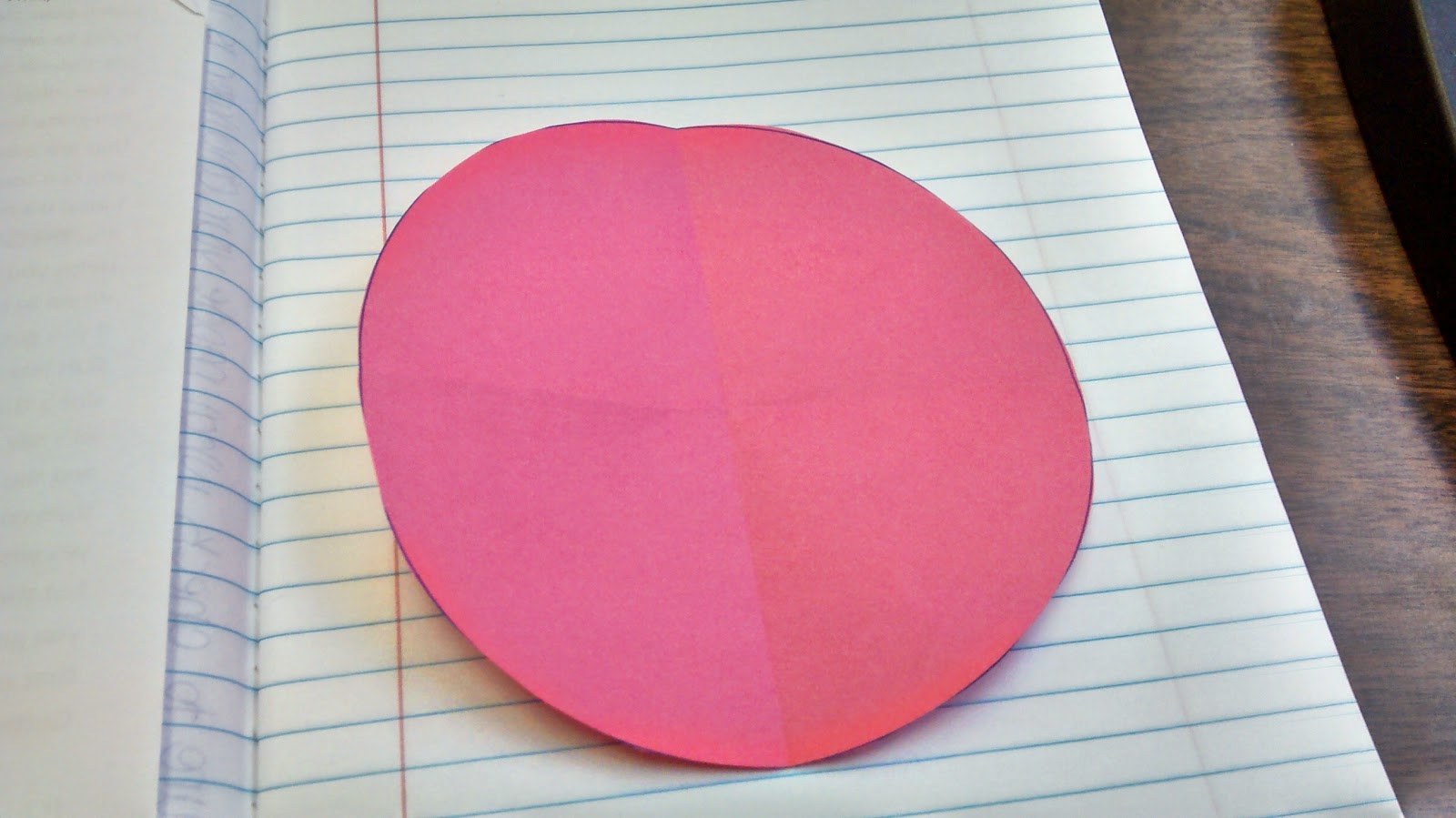
Step 5: Mark the center of the circle.
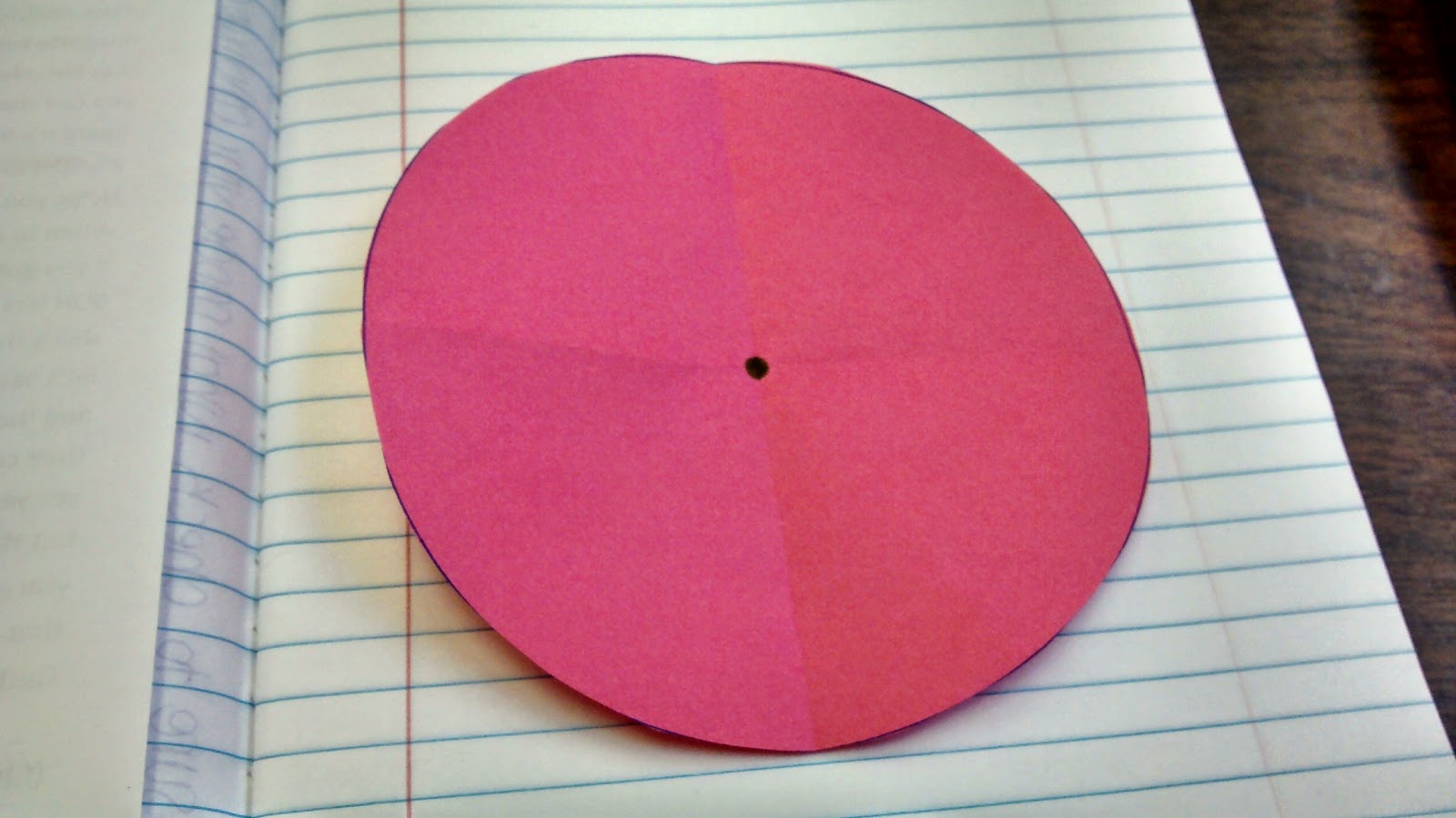
Step 6: Cut a pipe cleaner the same length as the radius of the circle.
Apparently, pipe cleaners are now called “fuzzy sticks.” What is up with that?!?
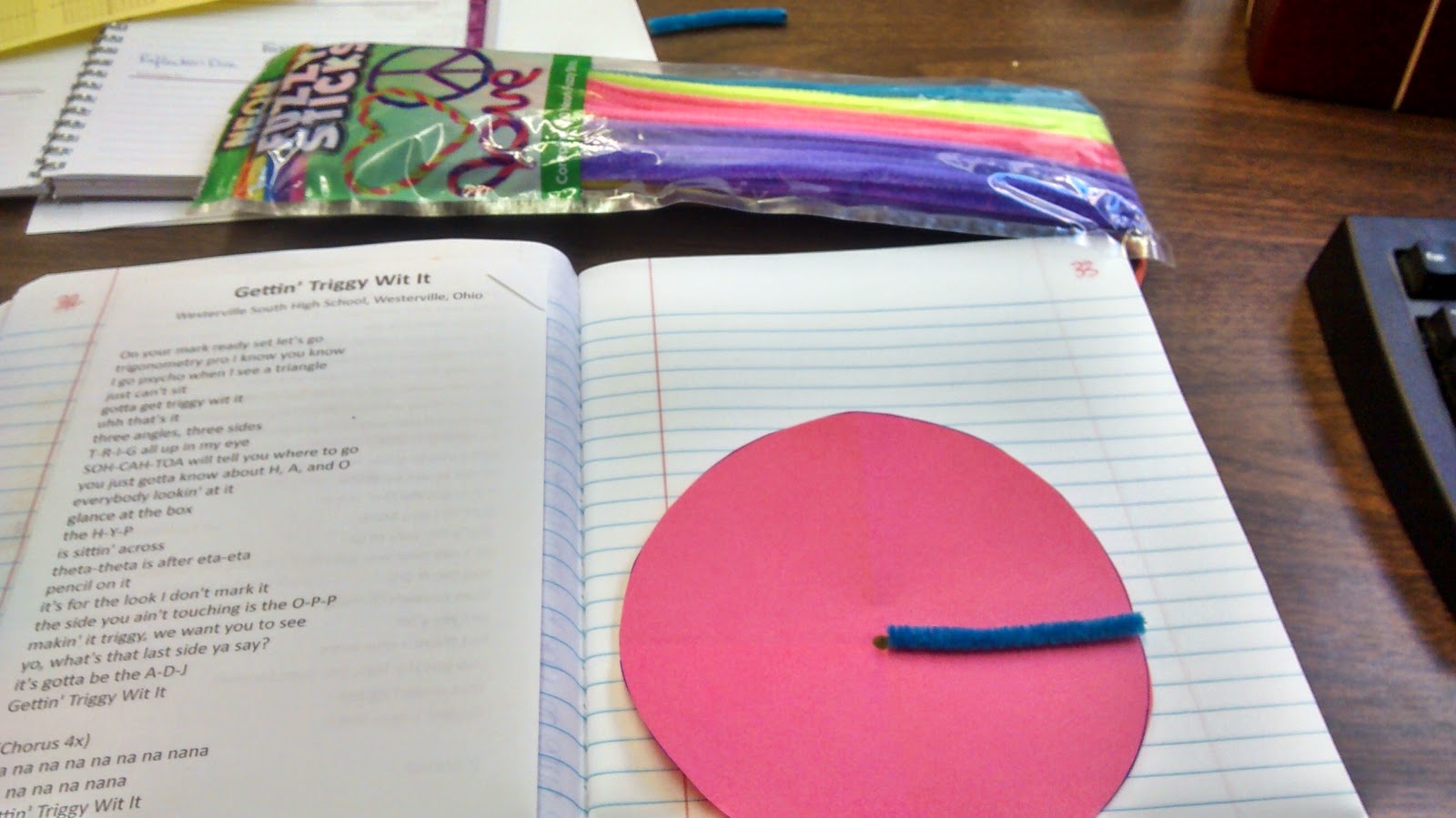
Step 7: Draw in the radius on the circle. Line up the pipe cleaner with the edge of the radius.
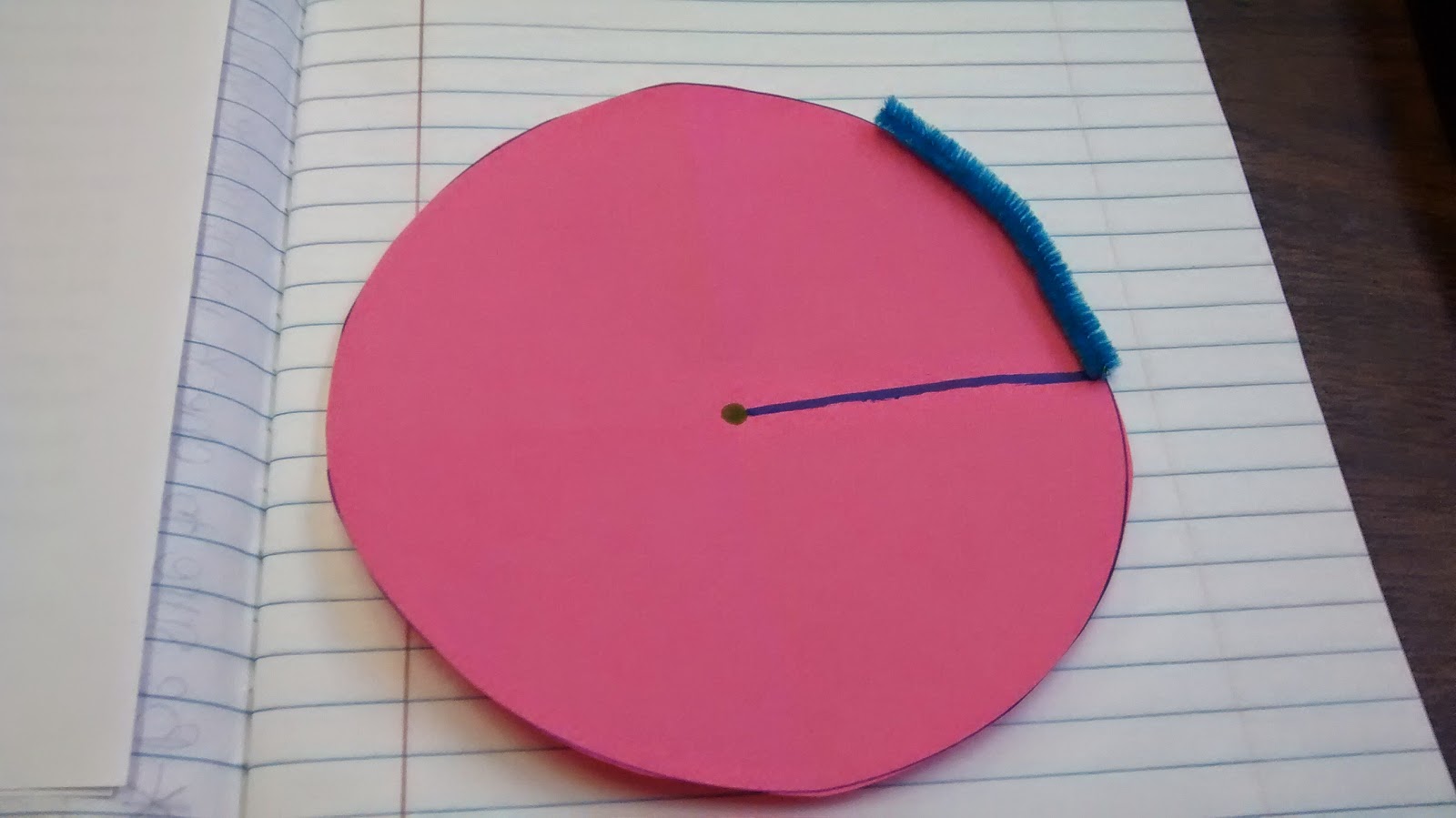
Step 8: Start wrapping the pipe cleaner around the circumference and marking where it stops.

Step 9: Divide the circle into sections based on your markings.
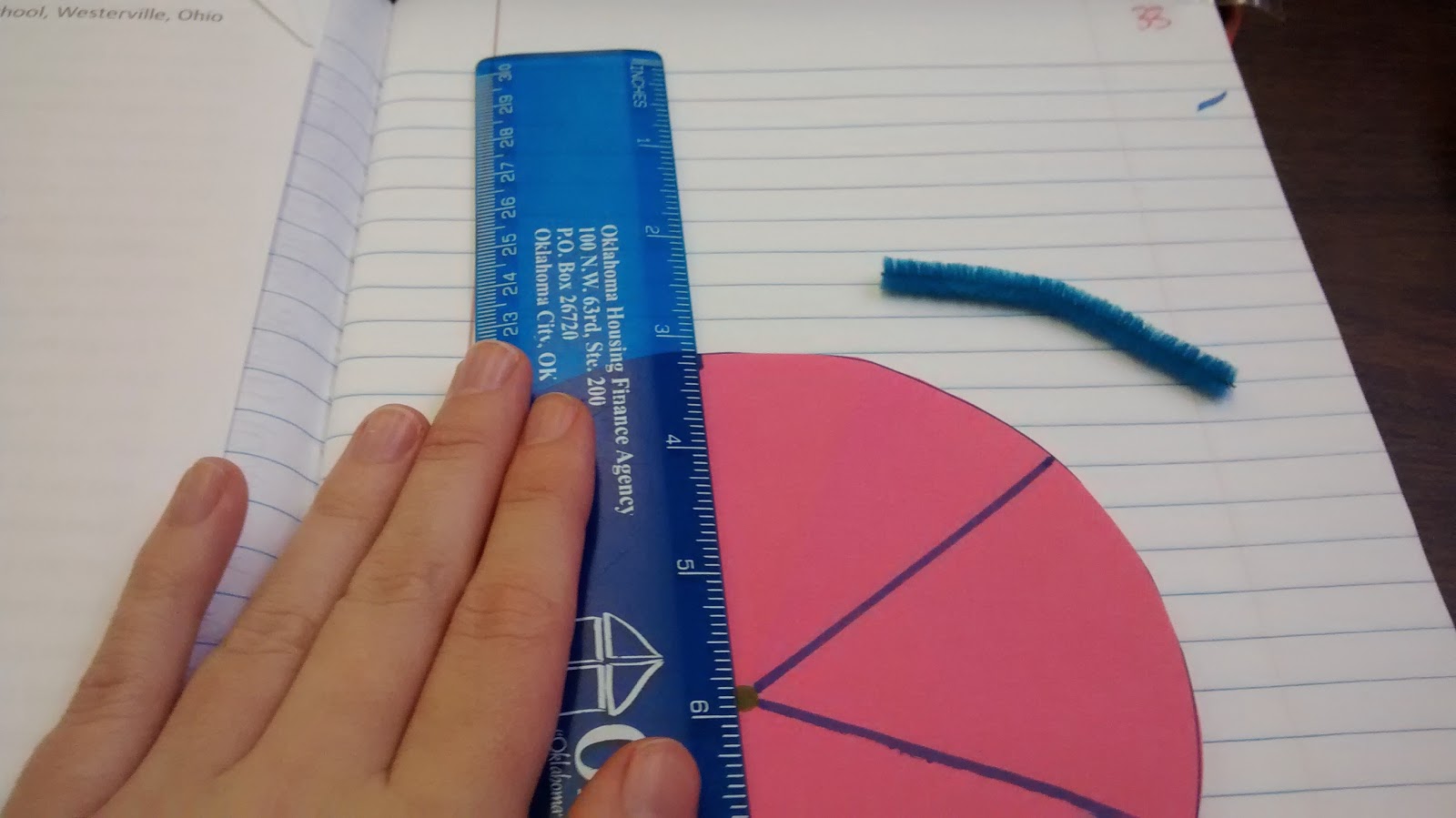
If students have attended to precision, They should end up with 6 equal sized sections plus a tiny left over section.
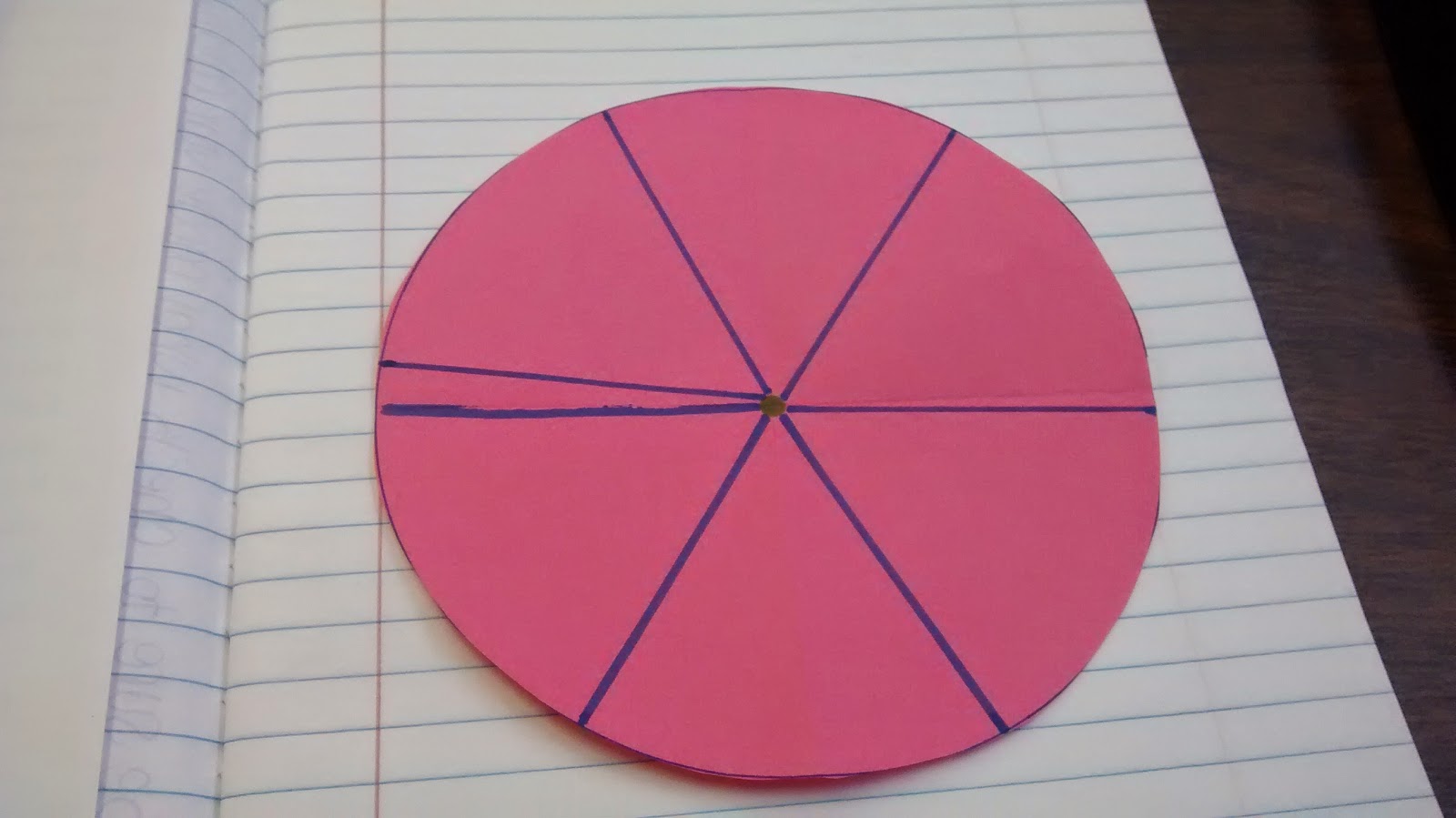
Glue the circle in your notebook.
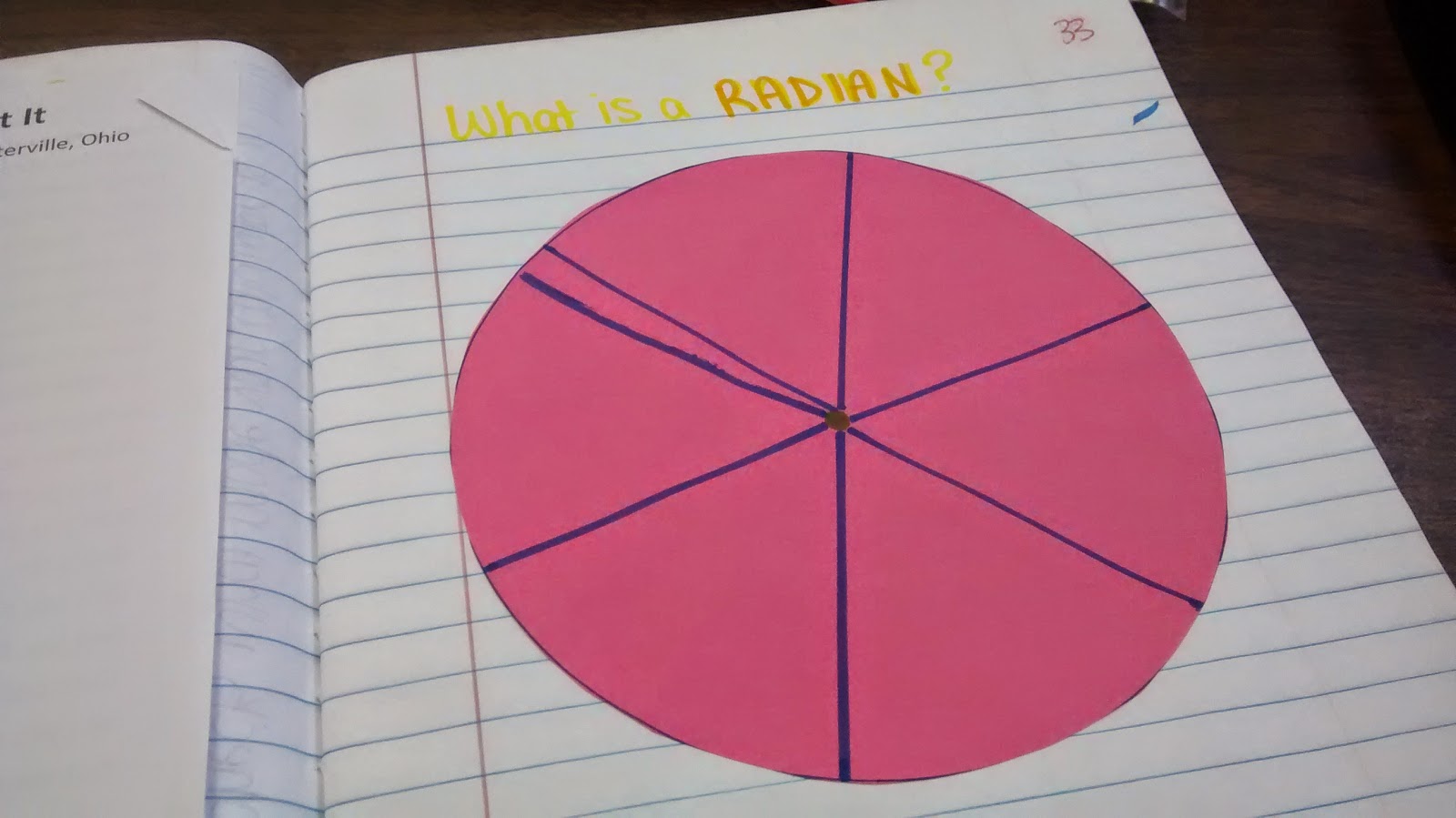
Define a radian as the angle that has an arc length equal to the radius of the circle.
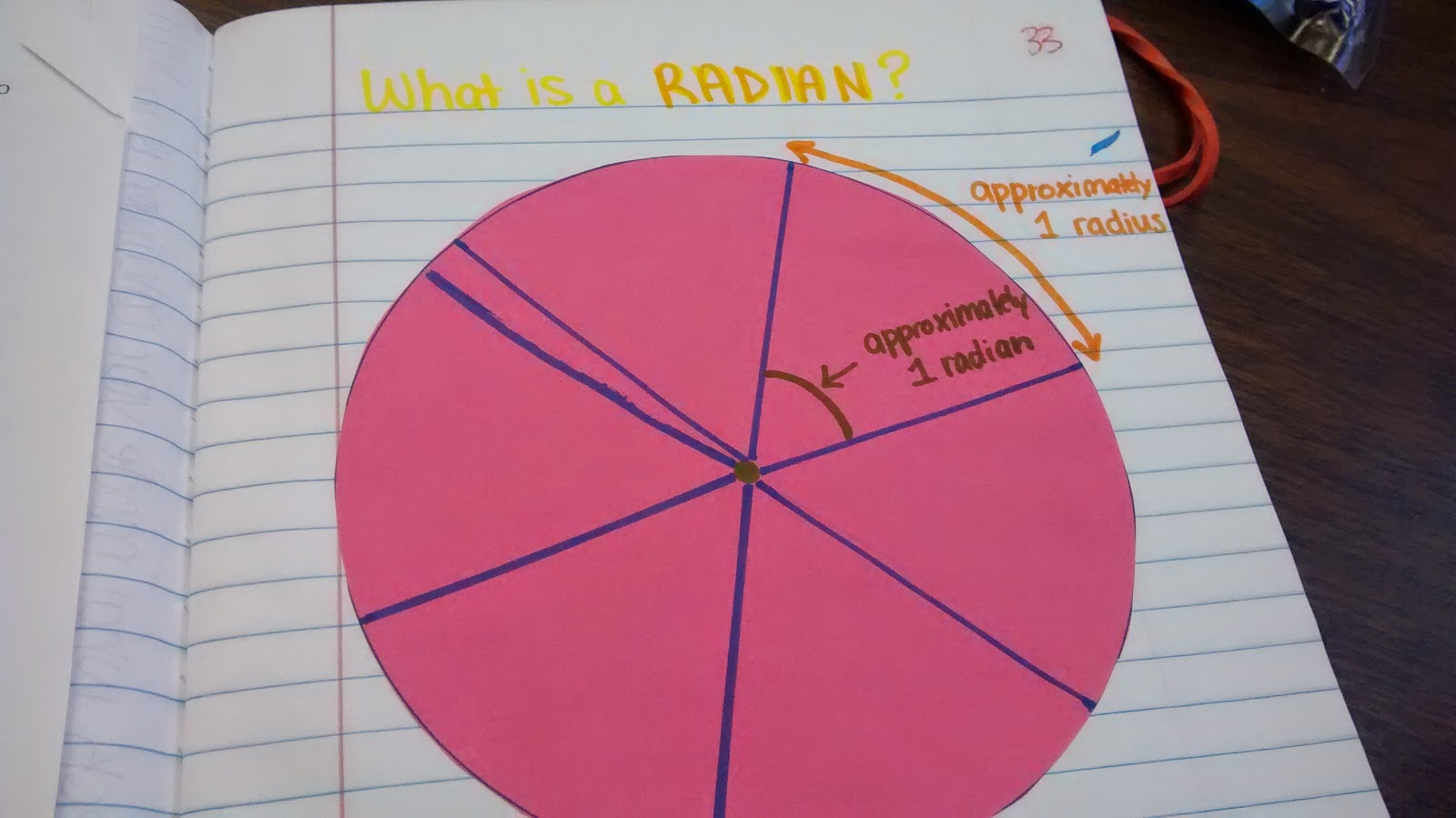
I wasn’t planning on this, but my students decided we needed to glue our pipe cleaners to the radius. They turned out looking pretty cool!

We wrote in the definition of a radian.
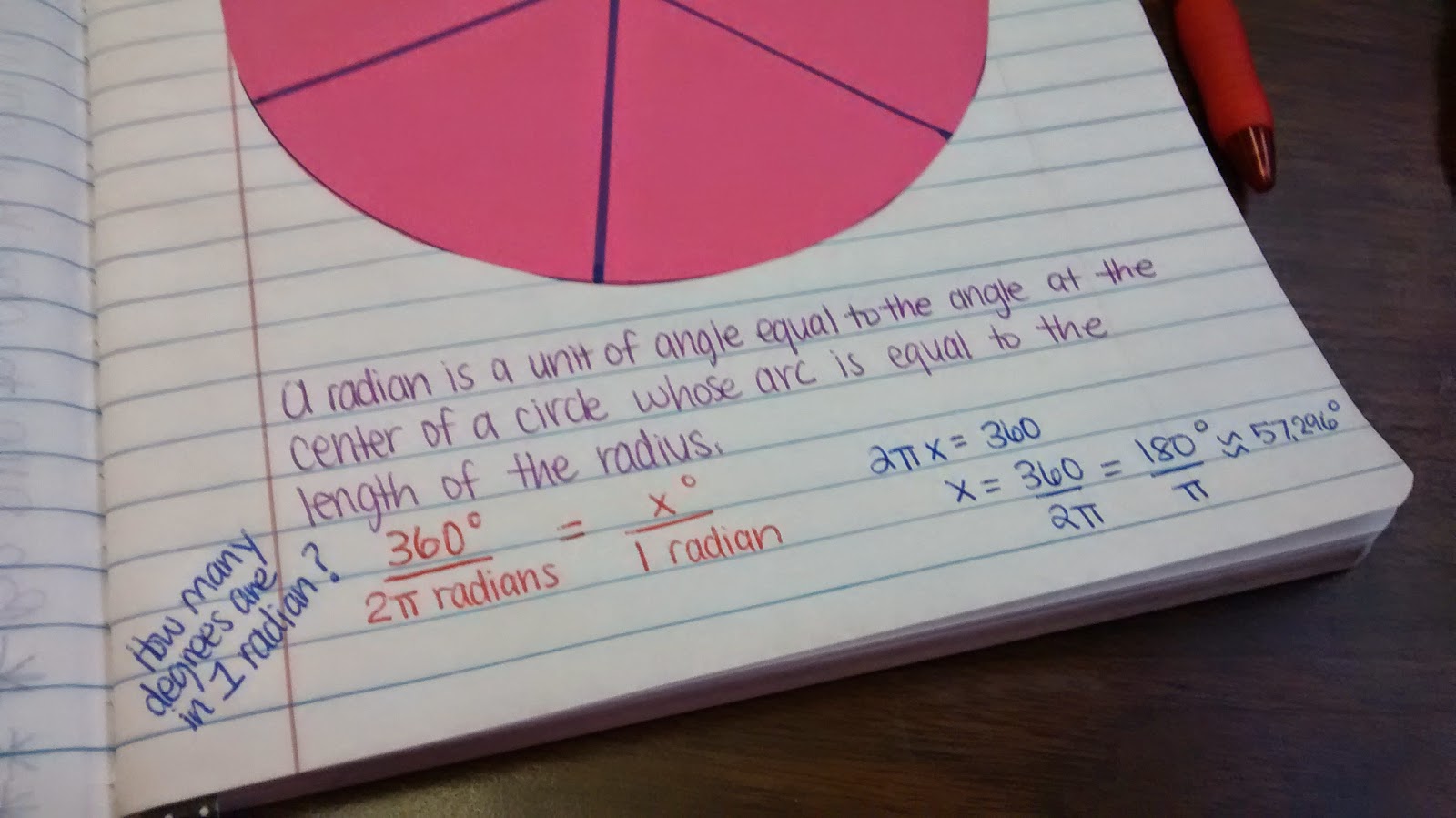
Then, we set about figuring out just how many degrees are in a radian. If there were just the six equal sized sections, how many degrees would a radian be? 360 degrees divided by 6 is 60 degrees. But, there are six sections AND a little section, so each section must be less than 60 degrees.
We decided to set up a proportion to determine just how many degrees are in a radian. Okay. Let’s be honest. It was my idea to do this, not my students’ idea. But, they did go along with it, so I guess it still counts. At least, that’s what I’m telling myself. 😉
Before we could set up a proportion involving radians, we needed to review the formula for circumference of a circle. When I asked my trig students for the formula for circumference, they gave me the formula for area of a circle. They told me that “pi r squared” was the only circle formula that they knew… #sigh
When looking for information online regarding teaching radians, I ran across a song to sing that features the formula for circumference of a circle. There’s just something about song that helps me remember things. And, I assume that some of my students are like that, too. They decided we should write the lyrics for the circumference song in our notebooks. It’s a simple song set to the tune of Twinkle, Twinkle Little Star: “Twinkle, Twinkle Little Star. Circumference equals 2 pi r.” Isn’t that the most brilliant thing you’ve ever heard in your life?!?

They remembered from geometry and our geometry review earlier in the year that a circle is equivalent to 360 degrees. And, the circumference of a circle is 2pir. We eventually found that a radian is approximately 57.296 degrees.
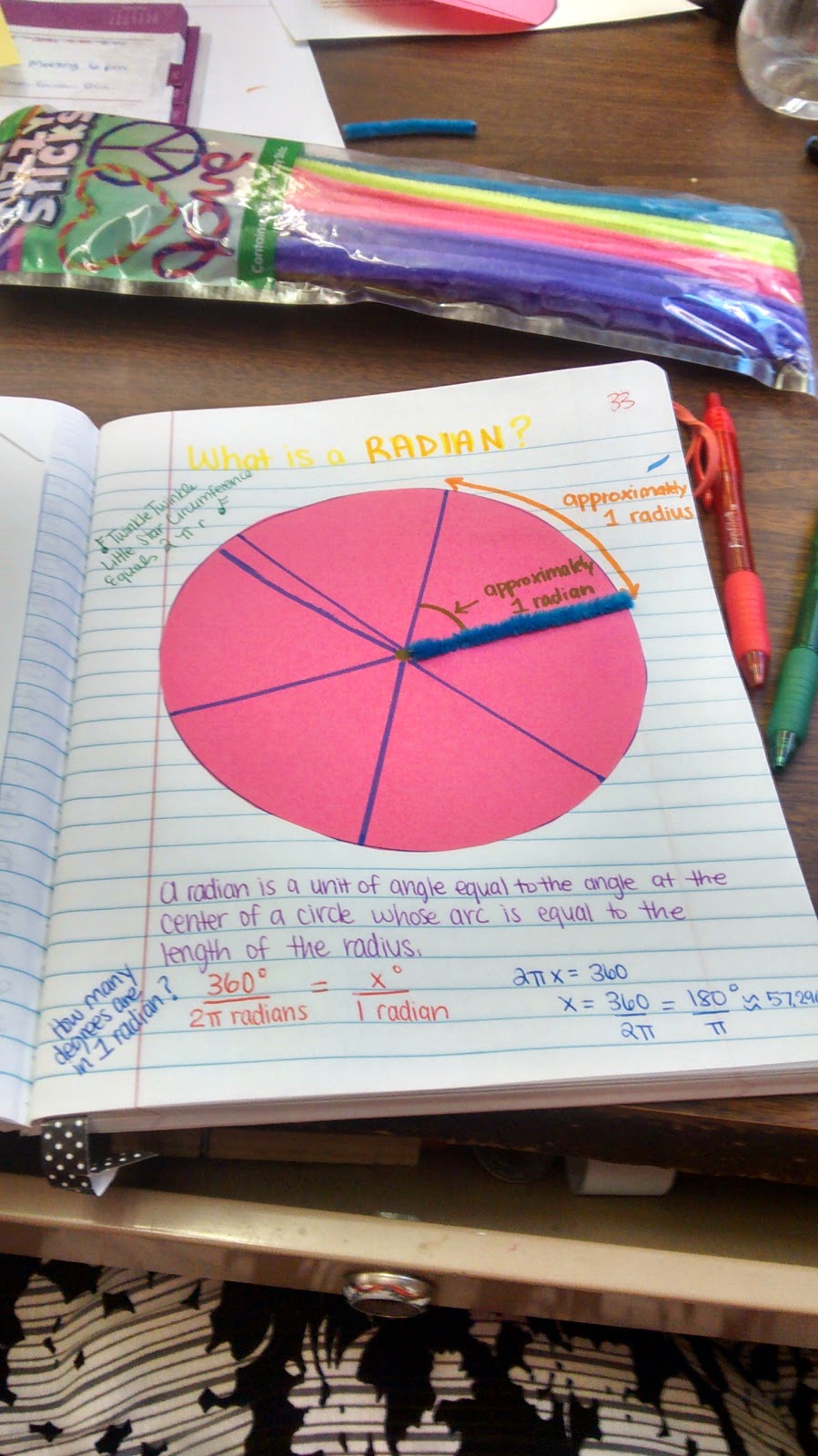
I’m hoping that this activity helps my students to never fear when the word radian appears.
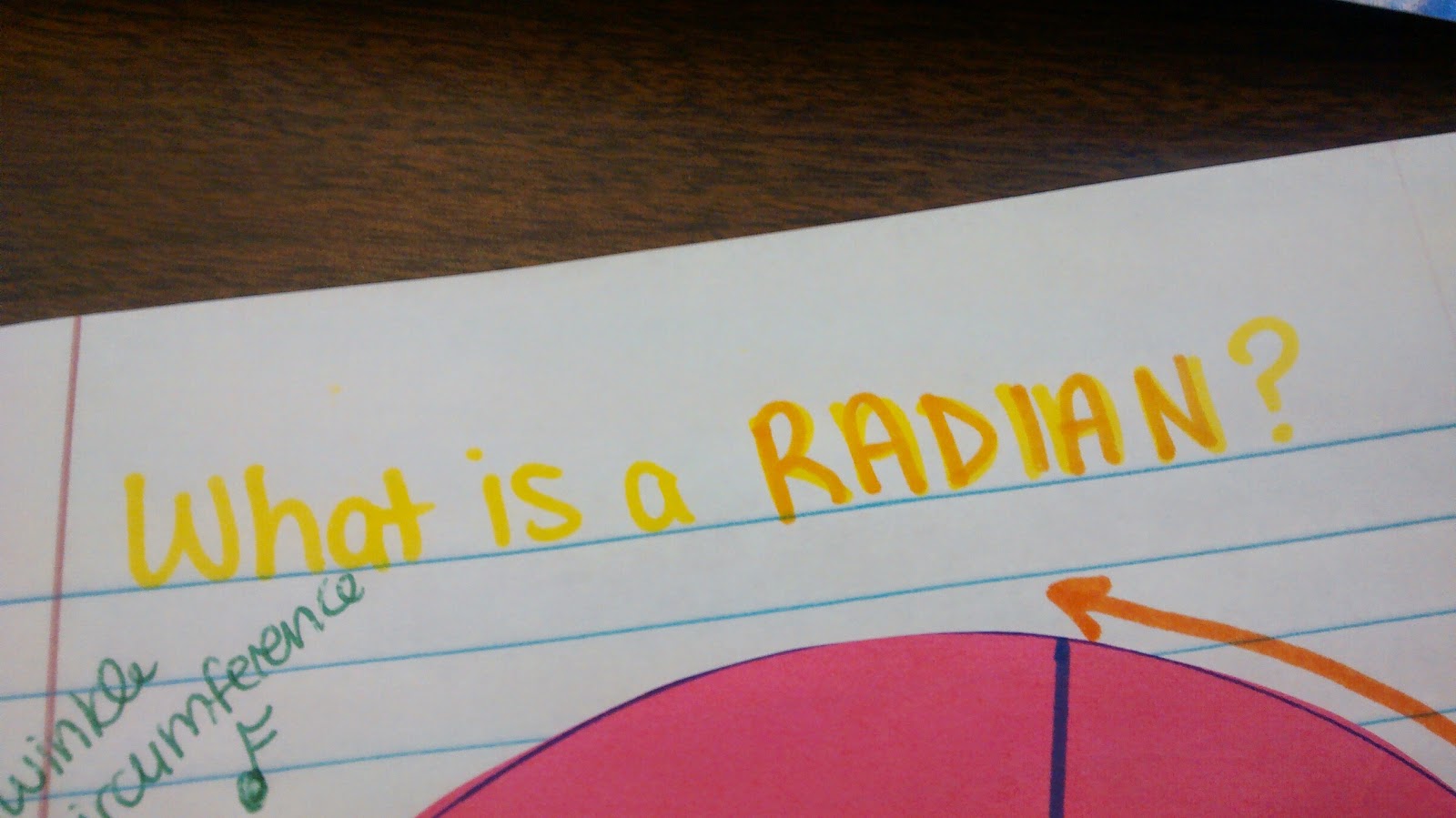
Photos of What is a Radian Activity from 2016-2017
I did make a tiny change this year. Instead of tracing jar lids to get a circle shape to cut out, I borrowed my husband’s new safety compasses. I love that my husband and I get to teach in the same school and share resources!
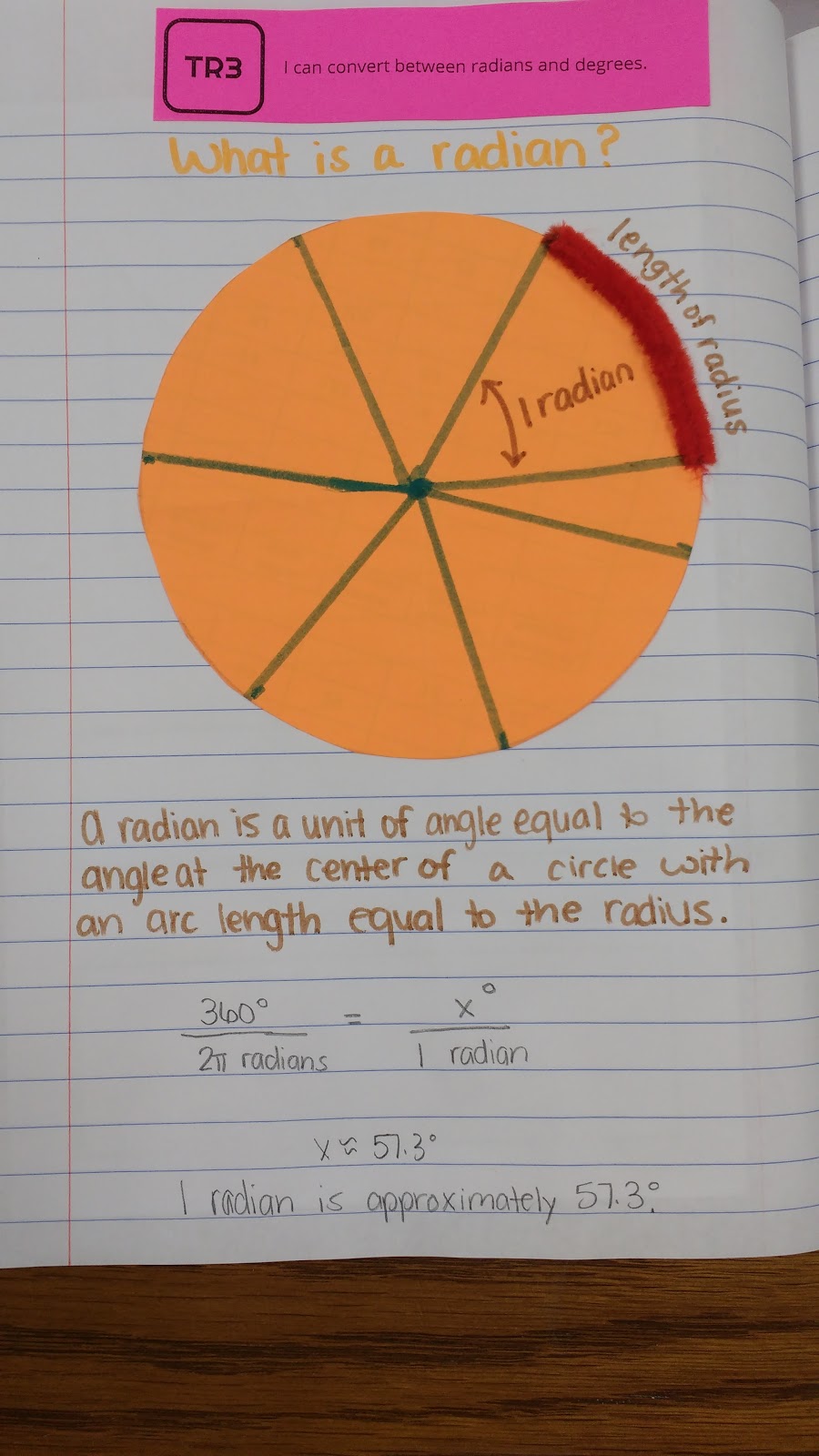
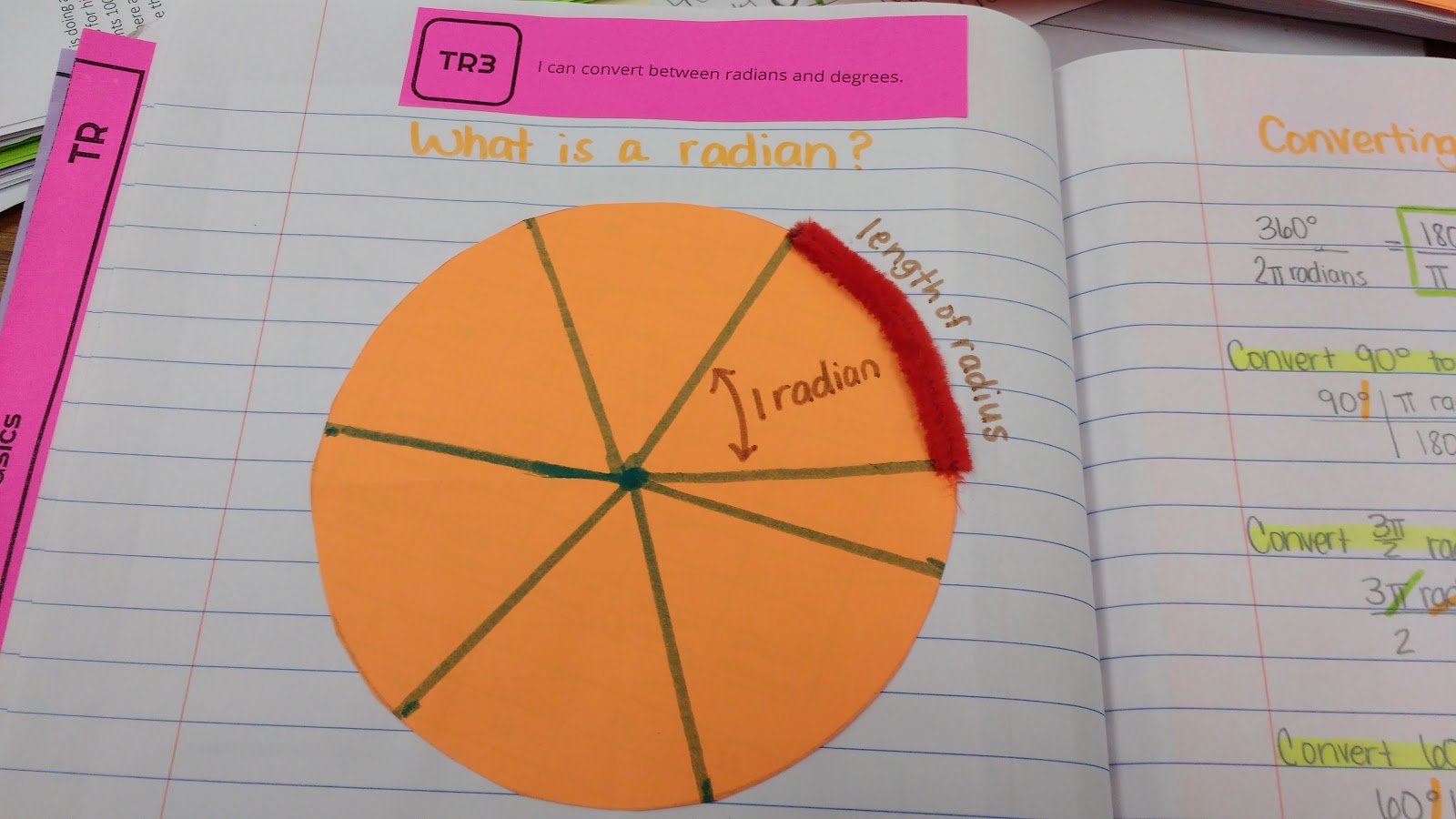
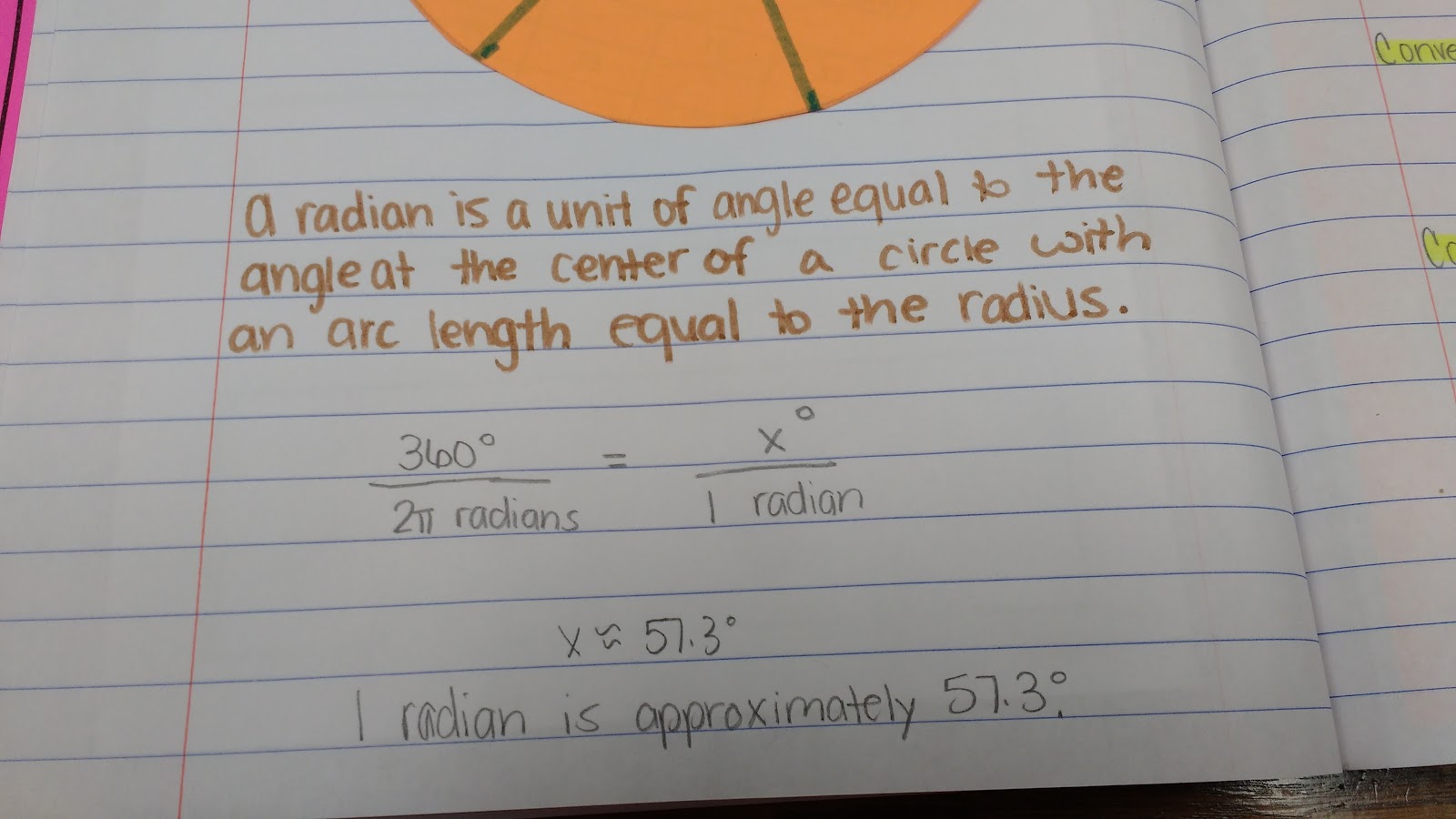
We set up a proportion to determine approximately how many degrees are in one radian.
After figuring out what in the world a radian was, we started converting between radians and degrees. At the beginning of the year, we spent a couple of days on unit conversions. I was hoping that would pay off when we got to converting between radians and degrees, and it did!
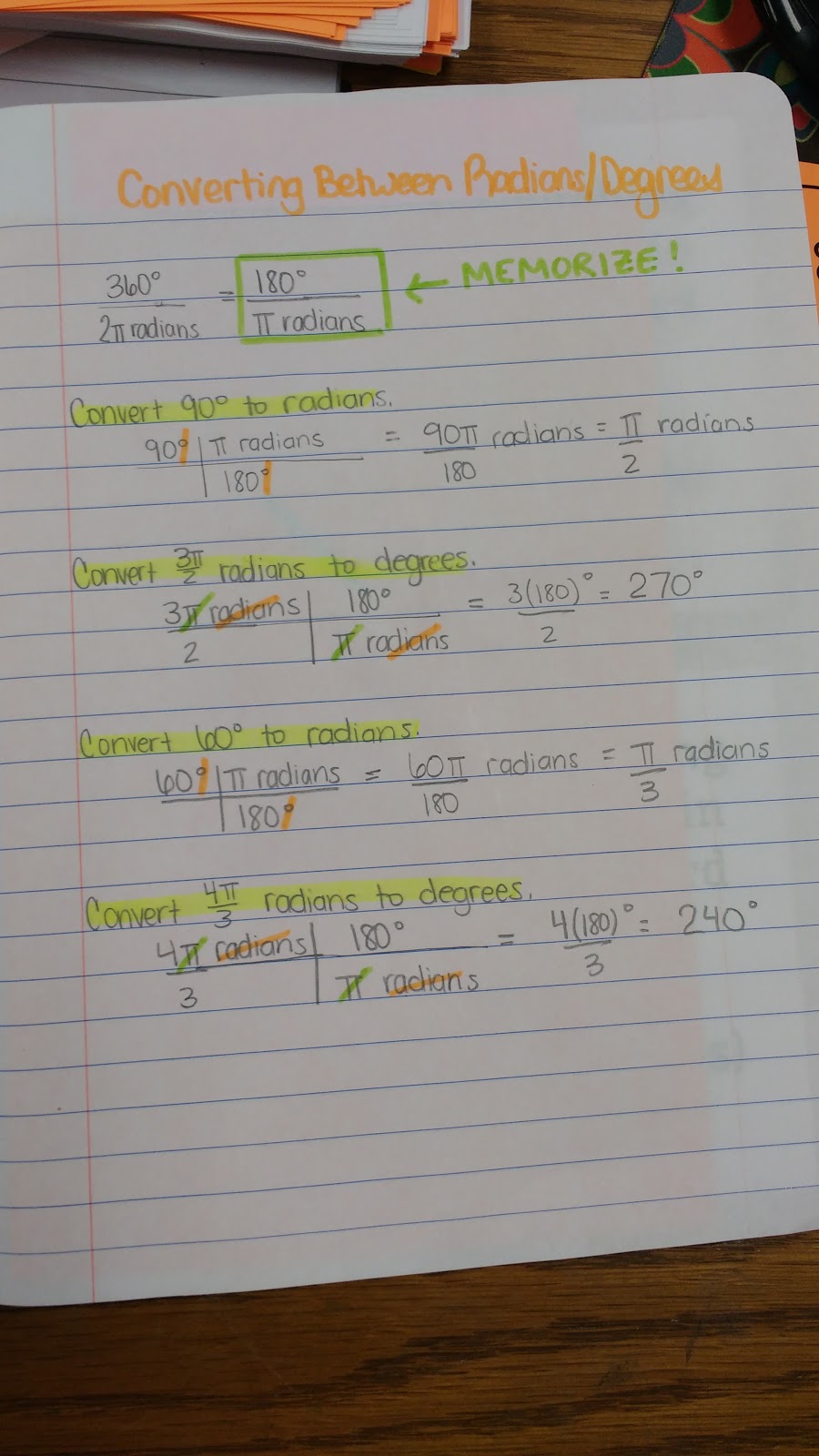
We ended up playing radians and degrees war to practice our unit conversion even further.

